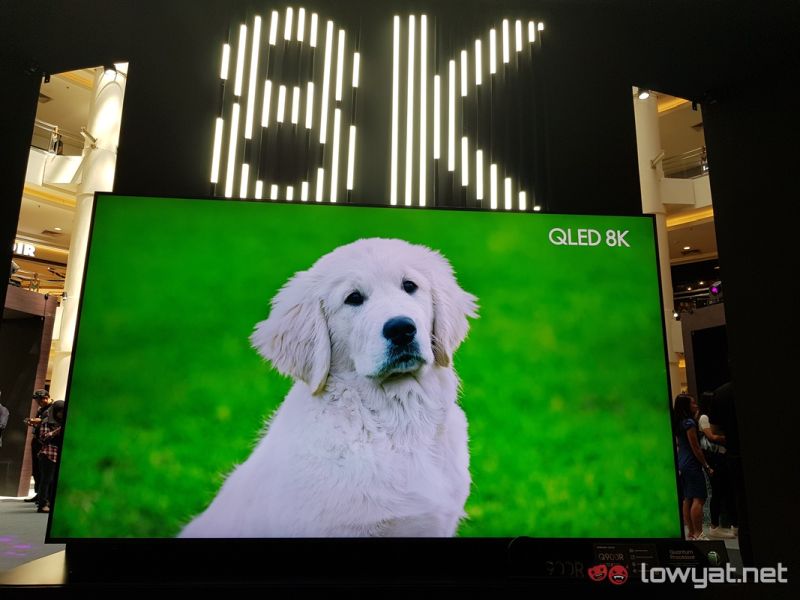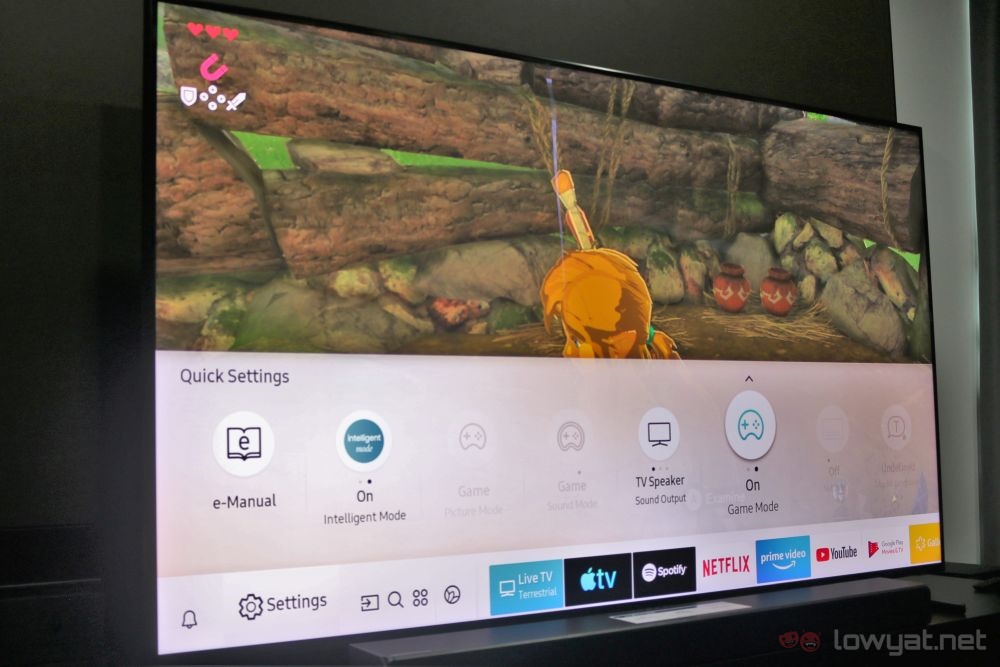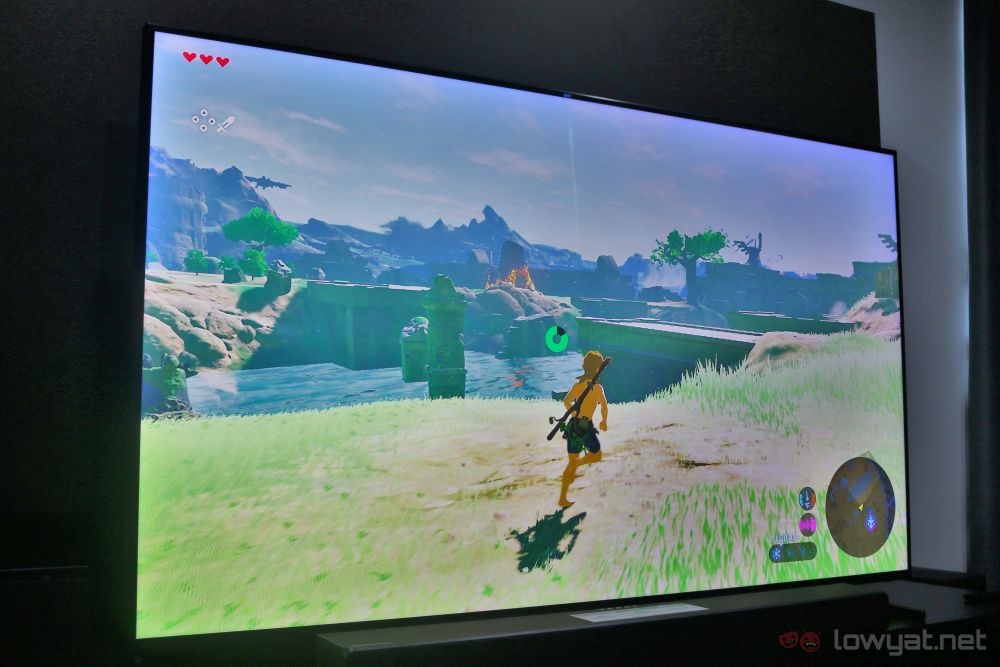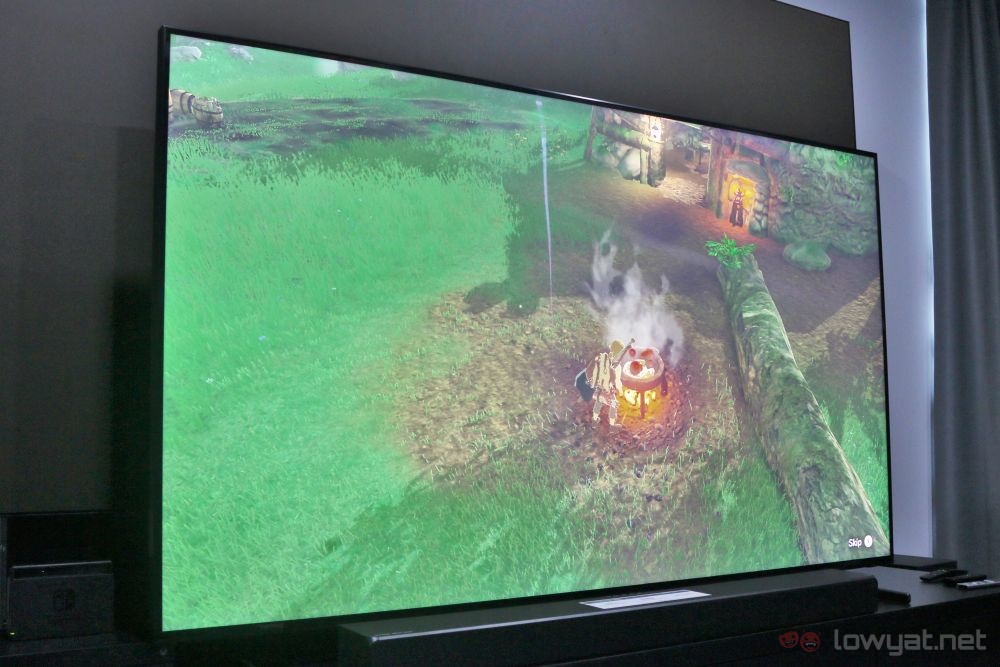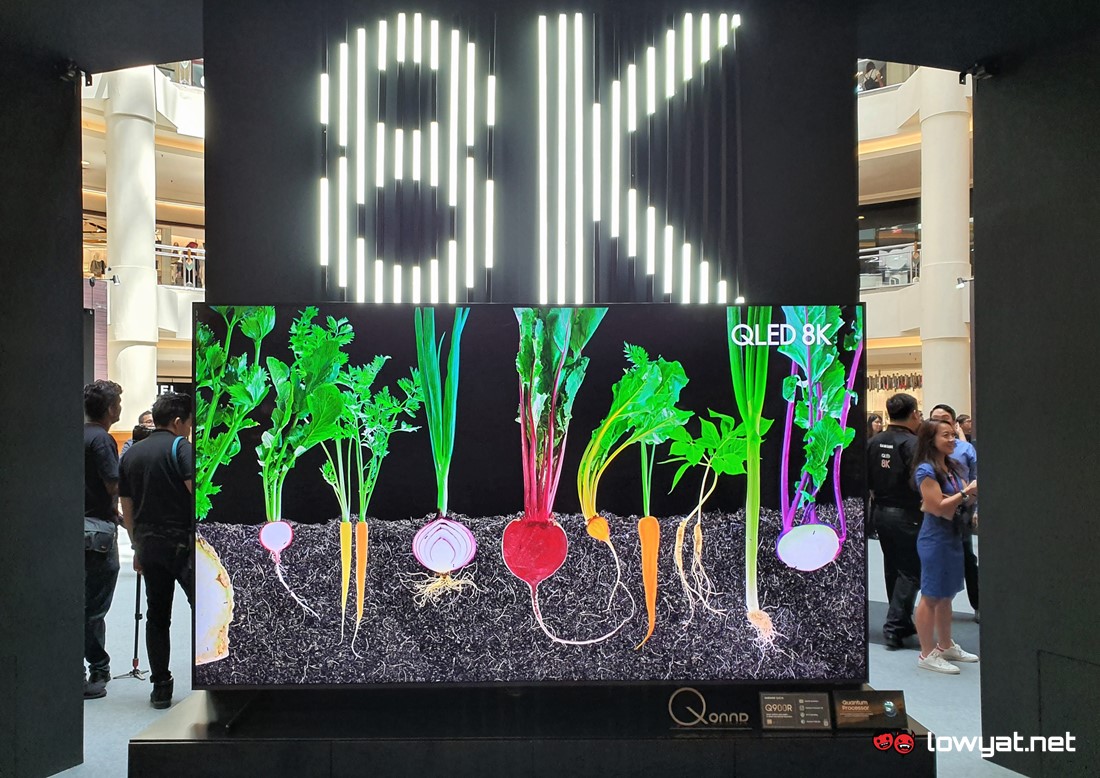According to Samsung during a media session with its QLED 8K TV yesterday, a lot of the features that you’d experience in general viewing will actually be carried over to your gaming sessions. For starters, the 8K Quantum processor built into these TVs handles the upscaling from any resolution up to 8K.
In addition to that, the chip also handles the colour remastering, which elevates SDR colours from the source material up to HDR colours. However, these two features are permanently on, and there’s no option to turn them off. Similarly, the 8K Quantum processor also upsamples sounds and intelligently tweaks it to fit the video component. You do have some control over this feature though and can switch it up as you see fit, much like other smart TVs out there.
With the general features out of the way, let’s get to the more gamer-centric parts. One of such features on the Samsung’s Q900 QLED 8K TVs is their 120Hz refresh rate as well as the support for AMD FreeSync 2. While the latter may be a feature that is meant only for Xbox One S, Xbox One X, and PCs with AMD Radeon graphics card, it is still nice that the feature is there nevertheless. The Q900 QLED 8K TV series also comes with a feature called Game Mode. What this does is reduce input delay down to 15.4ms, from an average of somewhere around 100ms. This is done at the cost of the Quantum processor doing less noise reduction and less texture recreation.
To see what all of the above combined really looks like in action, I plugged in our Nintendo Switch to the Q900 QLED 8K TV. The game played was The Legend of Zelda: Breath of the Wild which, even when docked, only outputs at 900p. With the Auto Game Mode kicking in, the game didn’t look too different compared to playing it on any other TV. That said, the subtle difference was definitely there – the upscaling did work its magic in reducing the jaggedness of what you see on screen. Colours were definitely more vivid as well.
The difference is greater with Game Mode turned off. Textures were smoother and the colours were a lot more vivid than before. The latter was especially good, as the contrast in the background was a lot more obvious than before. And for a game like The Legend of Zelda: Breath of the Wild, the increased input lag wasn’t important, nor was it noticeable, to be honest. For a single player game of this nature, turning off Gaming Mode is actually beneficial.
In general, it turns out that gaming on a huge 8K TV such as those from the Samsung QLED lineup isn’t that bad at all. This is despite using just a Nintendo Switch which generally has the least graphical firepower among the current generation of gaming consoles. With that being said, it’s difficult to make the proposition when it comes to the pricing though. To recap, the 75-inch model costs RM59,999, and the 82-inch model costs RM99,999. Meanwhile, the 98-inch model weighs over 70kg, takes up to eight weeks to assemble, and costs RM299,999.
